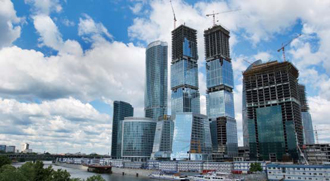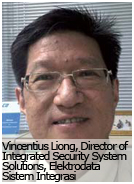
Also in APAC, Pike Research found retrofitting projects are becoming the more cost-effective approach, as the cost of new constructions increases. Developers and building owners will be inclined to reinvest in and upgrade existing facilities, allowing for the latest technologies to be incorporated and used.
“There is greater push for green building projects in emerging markets as seen in Asia, the Middle East and Latin America,” said Peter Boriskin, Director of Product Management, UTC Fire & Security. “New buildings and infrastructure retrofitting projects will provide opportunities for the industry. From both building management and security management perspectives, new technologies help to reduce TCO as well.”
UNIQUE SOLUTION NEEDS
 Security products used for intelligent buildings regard energy conservation with utmost importance. “The goal of products that target the smart/green building vertical is to greatly reduce energy costs while improving the user experience,” said David Wilts, Director of Integrated Building Technology, Crestron Electronics. “Our preferred approach is to address all of a building owner's needs by integrating the ‘conditional logic' of the following systems: lighting, shades, HVAC, AV, security, scheduling (Microsoft Outlook, Lotus Domino or others) and energy monitoring.”
Security products used for intelligent buildings regard energy conservation with utmost importance. “The goal of products that target the smart/green building vertical is to greatly reduce energy costs while improving the user experience,” said David Wilts, Director of Integrated Building Technology, Crestron Electronics. “Our preferred approach is to address all of a building owner's needs by integrating the ‘conditional logic' of the following systems: lighting, shades, HVAC, AV, security, scheduling (Microsoft Outlook, Lotus Domino or others) and energy monitoring.”
For smart buildings, integration can be made easier with multiple products. “For instance, Ethernetcapable field-level controllers enable system designers to create a flat architecture, which eliminates the pain of integration with multiple levels of communication,” Hughson said. “It is beneficial not only for reducing the amount of system knowledge a person needs to work with a network, but minimizes logistical concerns for integrating with components in harder-to-reach areas.”
“We have developed wireless controllers for much the same reason,” Hughson added. “We have one IP network that allows one to move seamlessly throughout the network and jump off into wireless for difficult-to-install locations. We want to avoid the strains by creating a network that fits the design of a building.”
Similarly, using Power over Ethernet reduces the number of wires that must be strung for the network, leading to reduced cost, less downtime and greater flexibility in installation compared with traditional wiring, Lee said.
 “Typical indoor motion sensors are simple binary switches indicating motion or no motion, and such sensors have a long-standing history of certain basic and unavoidable operational flaws, such as false motion detections from movement around but not in the room and changes in airflow from cyclic operation of HVAC systems,” said Francis Létourneau, Sales Director for Lyrtech. “Typical motion sensors don't account for the type of objects, such as a person versus a plant,or the time the objects remain in the monitored area. They are also incapable of tracking objects while they are in the monitored area and incapable of compensating for the number of objects in the monitored area, something vital in HVAC control.”
“Typical indoor motion sensors are simple binary switches indicating motion or no motion, and such sensors have a long-standing history of certain basic and unavoidable operational flaws, such as false motion detections from movement around but not in the room and changes in airflow from cyclic operation of HVAC systems,” said Francis Létourneau, Sales Director for Lyrtech. “Typical motion sensors don't account for the type of objects, such as a person versus a plant,or the time the objects remain in the monitored area. They are also incapable of tracking objects while they are in the monitored area and incapable of compensating for the number of objects in the monitored area, something vital in HVAC control.”
By combining video analytics and motion detection technologies, an intelligent occupancy sensor (IOS) would be able to determine both the type and number of objects in a single room accurately. “A substantial portion of the IOS's interfaces is integrated to the onboard DSP and it benefits from a relatively small FPGA and generic components, which makes the total cost of incorporating the IOS into a manufactured solution quite low for a device of its kind,” Létourneau added.